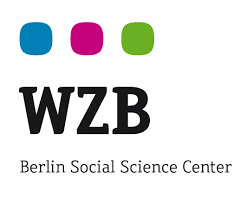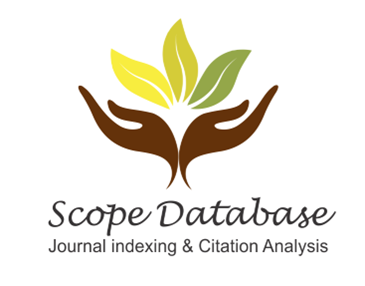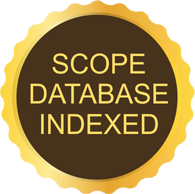CANDIDEMIA, UMA BREVE REVISÃO BIBLIOGRÁFICA
DOI:
https://doi.org/10.47820/recisatec.v4i2.353Palavras-chave:
Candidemia, candida, resistência, fatores de virulencia, candida aurisResumo
Candidemia é considerada uma das complicações das infecções causadas por fungos do gênero Candida em pacientes hospitalizados, resultando em altas taxas de mortalidade e morbidade. Trata-se de um processo infeccioso sistêmico originado por espécies do gênero Candida, sendo reconhecido como a quarta causa mais prevalente de infecções sanguíneas. O objetivo deste estudo consiste em realizar uma revisão concisa da literatura abordando temas como candidemia, resistência, fatores de virulência, diagnóstico e tratamento. Para isso, foi realizada revisão de literatura com análise de dados secundários sobre candidemia em pacientes hospitalizados. Foram utilizados diversos repositórios, como BVS Brasil, Scielo, Pubmed, LILACS, Elsevier e Medline, com descritores específicos. Foram incluídos 29 estudos em português, inglês e espanhol no período de 2018 a 2023, abrangendo artigos de estudo de caso, estudo clínico e revisão sistemática, enquanto trabalhos fora desse período e critérios foram excluídos. A revisão de literatura destaca a crescente preocupação com a candidemia devido à sua alta morbidade e mortalidade, especialmente em pacientes hospitalizados. Diante da diversidade de espécies de Candida e seus fatores de virulência, como a Candida auris, abordagens multidisciplinares com avaliação clínica, culturas laboratoriais e técnicas moleculares são cruciais para diagnóstico e tratamento eficazes, requerendo monitoramento epidemiológico para orientar estratégias de controle e prevenção.
Downloads
Referências
BARANTSEVICH, Natalia; BARANTSEVICH, Elena. Diagnosis and Treatment of Invasive Candidiasis. Antibiotics (Basel, Switzerland), v. 11, n. 6, p. 718, 26 maio 2022. DOI: 10.3390/antibiotics11060718. DOI: https://doi.org/10.3390/antibiotics11060718
BASTOS, R. C. et al. Molecular Diagnosis Compared to Conventional Diagnosis for Rapid Detection of Resistant Strains of Candida Spp. Research, Society and Development, v. 12, n. 4, p. e14112441088, 2023. DOI: 10.33448/rsd-v12i4.41088. Disponível em: https://rsdjournal.org/index.php/rsd/article/view/41088. Acesso em: 30 mar. 2024. DOI: https://doi.org/10.33448/rsd-v12i4.41088
BATTISTOLO, J.; GLAMPEDAKIS, E.; DAMONTI, L.; POISSY, J.; GRANDBASTIEN, B.; KALBERMATTER, L.; PAGANI, J. L.; EGGIMANN, P.; BOCHUD, P. Y.; CALANDRA, T.; MARCHETTI, O.; LAMOTH, F. Fungal Infection Network of Switzerland (FUNGINOS). Increasing morbidity and mortality of candidemia over one decade in a Swiss university hospital. Mycoses, v. 64, n. 12, p. 1512-1520, dec. 2021. doi: 10.1111/myc.13376. DOI: https://doi.org/10.1111/myc.13376
BILAL, H. et al. Distribution and antifungal susceptibility pattern of Candida species from mainland China: A systematic analysis. Virulence, v. 13, n. 1, p. 1573-1589, 2022. doi:10.1080/21505594.2022.2123325. DOI: https://doi.org/10.1080/21505594.2022.2123325
CAKIR, N. et al. Molecular identification, virulence factors and antifungal susceptibility patterns of Candida parapsilosis complex species isolated from clinical samples. Nigerian journal of clinical practice, v. 24, n. 6, p. 853-859, 2021. doi:10.4103/njcp.njcp_50_20. DOI: https://doi.org/10.4103/njcp.njcp_50_20
CALIMAN, et al. Candida auris: a novel emerging nosocomial pathogen - properties, epidemiological situation and infection control. GMS hygiene and infection control, v. 18, Doc18, p. 16 ago. 2023. DOI: 10.3205/dgkh000444.
CANASSA, A. L.; TEIXEIRA DA CRUZ, D. Incidência e perfil de suscetibilidade de candidemias de um hospital público em Mato Grosso do Sul, Brasil. RBPS, v. 21, n. 4, p. 110-117, 31 dez. 2019. Disponível em: https://periodicos.ufes.br/rbps/article/view/31021.
CASADEVALL, A.; KONTOYIANNIS, D. P.; ROBERT, V. On the Emergence of Candida auris: Climate Change, Azoles, Swamps, and Birds. MBIO, v. 10, n. 4, p. e01397-19, 23 jul. 2019. doi: 10.1128/mBio.01397-19. DOI: https://doi.org/10.1128/mBio.01397-19
DE SOUZA, C. M. et al. Adhesion of Candida tropicalis to polystyrene and epithelial cell lines: Insights of correlation of the extent of adherent yeast cells among distinct surfaces. Journal de mycologie medicale, v. 30, n. 4, p. 101043, 2020. doi:10.1016/j.mycmed.2020.101043. DOI: https://doi.org/10.1016/j.mycmed.2020.101043
DOS SANTOS, Murilo M; ISHIDA, Kelly. We need to talk about Candida tropicalis: Virulence factors and survival mechanisms. Medical mycology, v. 61, n. 8, p. myad075, 2023. doi:10.1093/mmy/myad075. DOI: https://doi.org/10.1093/mmy/myad075
EL-KHOLY, Mohammed A. et al. Virulence Factors and Antifungal Susceptibility Profile of C. tropicalis Isolated from Various Clinical Specimens in Alexandria, Egypt. Journal of fungi (Basel, Switzerland), v. 7, n. 5, p. 351, 29 abr. 2021. doi:10.3390/jof7050351. DOI: https://doi.org/10.3390/jof7050351
GARCIA-BUSTOS, V. et al. Host-pathogen interactions upon Candida auris infection: fungal behaviour and immune response in Galleria mellonella. Emerging Microbes & infections, v. 11, n. 1, p. 136-146, dez. 2022. doi: 10.1080/22221751.2021.2017756. DOI: https://doi.org/10.1080/22221751.2021.2017756
HASSANOPOUR, P. et al. Molecular diagnosis, phylogenetic analysis, and antifungal susceptibility profiles of Candida species isolated from neutropenic oncological patients. BMC InfectIous Diseases, v. 23, p. 765, 2023. DOI: 10.1186/s12879-023-08774-z. DOI: https://doi.org/10.1186/s12879-023-08774-z
JACKSON, B. R.; CHOW, N.; FORSBERG, K.; LITVINTSEVA, A. P.; LOCKHART, S. R.; WELSH, R.; VALLABHANENI, S.; CHILLER, T. On the Origins of a Species: What Might Explain the Rise of Candida auris? Journal Fungi (Basel), v. 5, n. 3, p. 58, 6 jul. 2019. doi: 10.3390/jof5030058. DOI: https://doi.org/10.3390/jof5030058
MACIAS-PAZ, Ignacio Uriel et al. Candida albicans the main opportunistic pathogenic fungus in humans. Revista Argentina de Microbiologia, v. 55, n. 2, p. 189-198, 2023. doi:10.1016/j.ram.2022.08.003. DOI: https://doi.org/10.1016/j.ram.2022.08.003
MACIEL, Eli Isael et al. Epithelial Infection With Candida albicans Elicits a Multi-System Response in Planarians. Frontiers in microbiology, v. 11, p. 629526, 14 jan. 2021. doi:10.3389/fmicb.2020.629526. DOI: https://doi.org/10.3389/fmicb.2020.629526
MCCARTY, Todd P. et al. Candidemia and Invasive Candidiasis. Infectious disease clinics of North America, v. 35, n. 2, p. 389-413, 2021. doi:10.1016/j.idc.2021.03.007. DOI: https://doi.org/10.1016/j.idc.2021.03.007
NAGLIK, Julian R. et al. Candidalysin: discovery and function in Candida albicans infections. Current opinion in microbiology, v. 52, p. 100-109, 2019. doi:10.1016/j.mib.2019.06.002. DOI: https://doi.org/10.1016/j.mib.2019.06.002
OSEI SEKYERE, John. Candida auris: A systematic review and meta-analysis of current updates on an emerging multidrug-resistant pathogen. Microbiology Open, v. 7, n. 4, p. e00578, 2018. doi:10.1002/mbo3.578. DOI: https://doi.org/10.1002/mbo3.578
PEREIRA, R. et al. Biofilm of Candida albicans: formation, regulation and resistance. Journal of applied microbiology, v. 131, n. 1, p. 11-22, 2021. doi:10.1111/jam.14949. DOI: https://doi.org/10.1111/jam.14949
POISSY, Julien et al. Risk factors for candidemia: a prospective matched case-control study. Critical care (London, England), v. 24, n. 1, p. 109, 18 Mar. 2020. doi:10.1186/s13054-020-2766-1. DOI: https://doi.org/10.1186/s13054-020-2766-1
SAIPROM, N. et al. Characterization of Virulence Factors in Candida Species Causing Candidemia in a Tertiary Care Hospital in Bangkok, Thailand. Journal of Fungi, v. 9, n. 353, 2023. doi:10.3390/jof9030353. DOI: https://doi.org/10.3390/jof9030353
SARDI, Janaina de Cássia Orlandi et al. Candida auris: Epidemiology, risk factors, virulence, resistance, and therapeutic options. Microbial pathogenesis, v. 125, p. 116-121, 2018. doi:10.1016/j.micpath.2018.09.014. DOI: https://doi.org/10.1016/j.micpath.2018.09.014
SASANI, Elahe et al. Virulence Factors and Azole-Resistant Mechanism of Candida Tropicalis Isolated from Candidemia. Mycopathologia, v. 186, n. 6, p. 847-856, 2021. doi:10.1007/s11046-021-00580-y. DOI: https://doi.org/10.1007/s11046-021-00580-y
SCHROEDER, M. et al. Epidemiology, clinical characteristics, and outcome of candidemia in critically ill patients in Germany: a single-center retrospective 10-year analysis. Ann. Intensive Care, v. 10, p. 142, 2020. doi:10.1186/s13613-020-00755-8. DOI: https://doi.org/10.1186/s13613-020-00755-8
WALL, GINA et al. Candida albicans biofilm growth and dispersal: contributions to pathogenesis. Current opinion in microbiology, v. 52, p. 1-6, 2019. doi:10.1016/j.mib.2019.04.001. DOI: https://doi.org/10.1016/j.mib.2019.04.001
XIAO, Z.; WANG, Q.; ZHU, F.; AN, Y. Epidemiology, species distribution, antifungal susceptibility and mortality risk factors of candidemia among critically ill patients: a retrospective study from 2011 to 2017 in a teaching hospital in China. Antimicrobial Resistance and Infection Control, v. 8, p. 89, 29 may 2019. doi: 10.1186/s13756-019-0534-2. DOI: https://doi.org/10.1186/s13756-019-0534-2
YUE, Huizhen et al. Filamentation in Candida auris, an emerging fungal pathogen of humans: passage through the mammalian body induces a heritable phenotypic switch. Emerging microbes & infections, v. 7, n. 1, p. 188, 28 nov. 2018. doi:10.1038/s41426-018-0187-x. DOI: https://doi.org/10.1038/s41426-018-0187-x
ZAMITH-MIRANDA, Daniel et al. Comparative Molecular and Immunoregulatory Analysis of Extracellular Vesicles from Candida albicans and Candida auris. MSystems, v. 6, n. 4, p. e0082221, 2021. doi:10.1128/mSystems.00822-21. DOI: https://doi.org/10.1128/mSystems.00822-21
Downloads
Publicado
Como Citar
Licença
Copyright (c) 2024 RECISATEC - REVISTA CIENTÍFICA SAÚDE E TECNOLOGIA - ISSN 2763-8405

Este trabalho está licenciado sob uma licença Creative Commons Attribution 4.0 International License.
Os direitos autorais dos artigos/resenhas/TCCs publicados pertecem à revista RECISATEC, e seguem o padrão Creative Commons (CC BY 4.0), permitindo a cópia ou reprodução, desde que cite a fonte e respeite os direitos dos autores e contenham menção aos mesmos nos créditos. Toda e qualquer obra publicada na revista, seu conteúdo é de responsabilidade dos autores, cabendo a RECISATEC apenas ser o veículo de divulgação, seguindo os padrões nacionais e internacionais de publicação.





















































